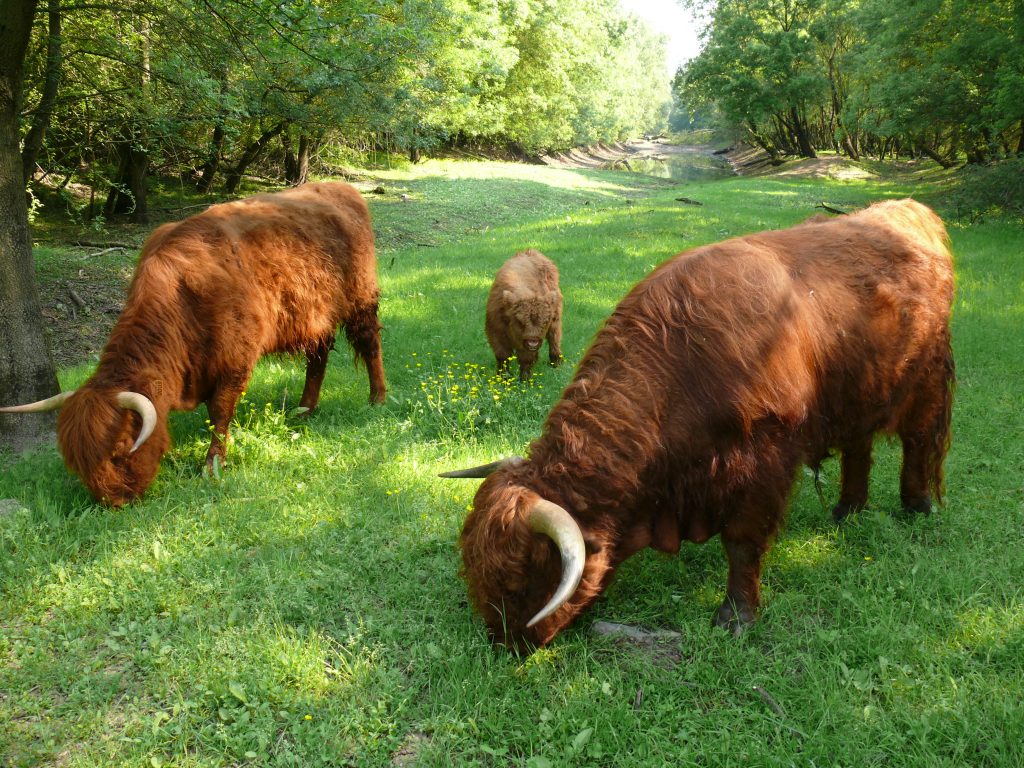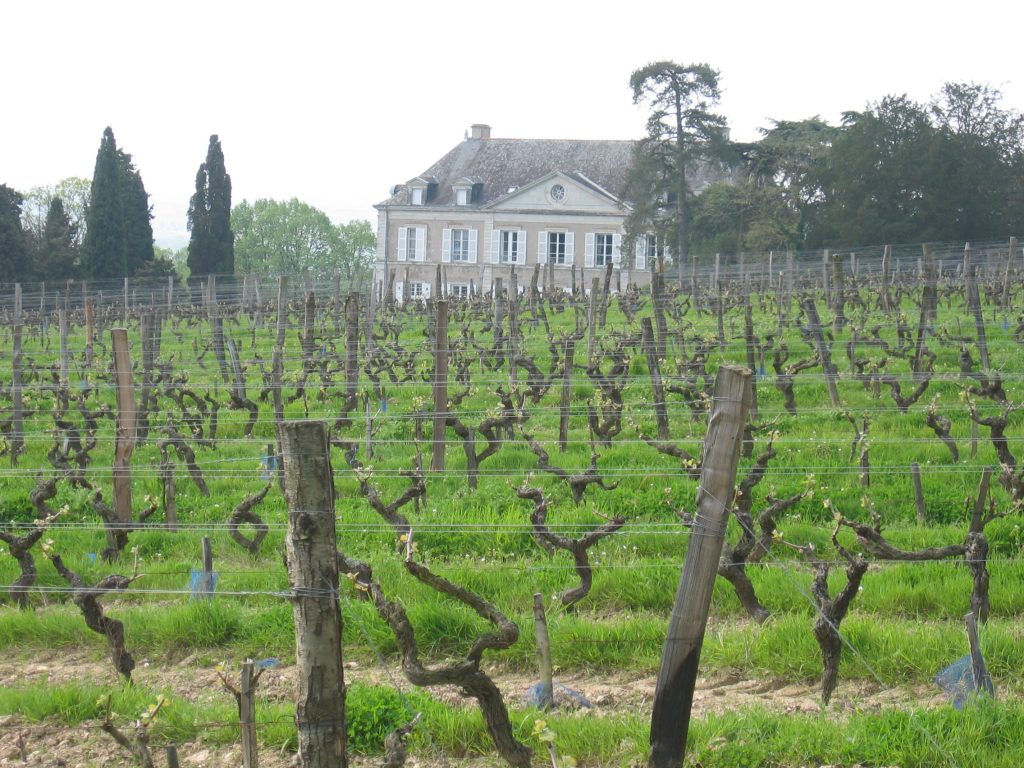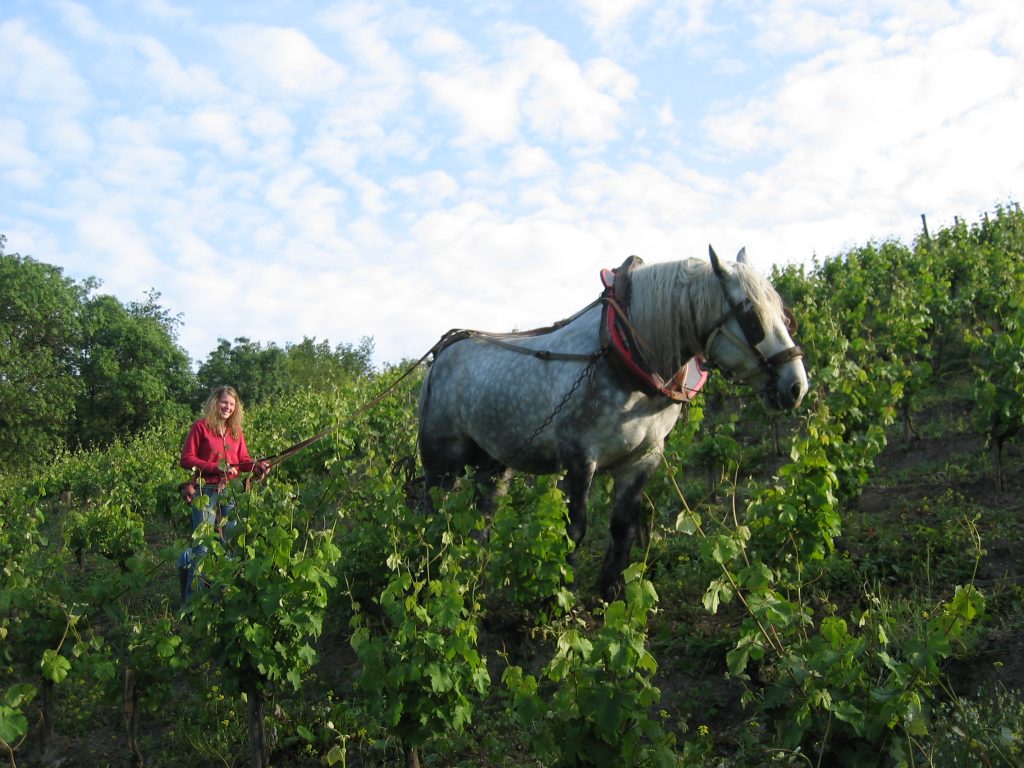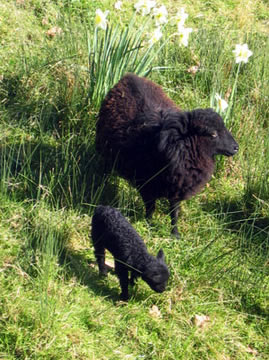Statutes of the vineyards of Coulée of Serrant
An AOC is marked by its soil and its microclimate. In order for the vines to perfectly seize these originalities, we have adopted rigorous vineyard management methods (since ‘84 all of the vineyards are biodynamic).
Compost on the vines ; this compost comes from our own herd of 10 cows (Nantaises, a rare breed – and Highlands, at home in wetlands) and two bulls to avoid artificial insemination which generates unbalance in the long term.
The cows are nourished the old-fashioned way with grain, beets and hay ; everything being essentially grown on the property. This feed, marked by the local environment produces a compost that is also adopted to the location. This compost is used for the biodynamic preparations.
Natural cover crop ; over time a dozen different species of interesting native plants have grown up around the vines. This limits the negative effects of monoculture.
In the absence of herbicides – systematically forbidden for over 20 years including between the rows – each root generates different microorganisms (mycorrhizae) that permit the vines to seize all of the soil’s subtleties.
Minimal plowing of the soil (covering and uncovering the rows) to avoid mixing the different soil strata. On the section worked by horses (1 ½ hectares) the vines are almost a century old and the soil is plowed completely.
Wintertime passage of a flock of Ouessant sheep in most of the vineyards. This rustic breed feeds on the cover crop and converts it into manure ! In the springtime, a portable chicken coop is installed in the parcels where there are snails.
- Treatment of diseases by biodynamic preparations that reinforce the link between the vine and its archetypal form (disease is only a deficiency of health) and by regular doses of teas of different plants (sage, sorrel, willow, nettle, thuya, elm, oak bark, goemon, arnica, blackthorn, grande cousoude, etc.) These are medicinal plants that come from the property for the most part, or the mountains where we harvest them on the auspicious date.
- A small amount of copper is used (Bordeaux mixture, 3 to 5 kg of pure copper per hectare per year). Certain parcels have not been treated for 3 years. Copper is an oligoelement essential to life. Sulfer is also used, it is also essential to life, but we are replacing it little by little by milk or whey (5 to 10 litres per hectare and per treatment) which is very active against oïdium and very healthy for the vines.
- Respect for the diversity of a environment ; to this end several hectares eligible for plantation in appellation remain wild or as open fields. The diversity of animal and plant life that results represents a source of harmony for the area and enriches the organic life of the soils, therefore the expression of the terroir effect.
- Utilisation of cuttings from our oldest vineyards to renew our vines. The vineyards have existed for almost 1000 years and it is important to conserve the typicity of our Chenins that are perfectly adapted to our own AOC, Coulée de Serrant. As opposed to a clone, it takes 6 years before a significant harvest !
- Severe pruning to limit the yield to 20 – 25 hectos / hectare on average each year, almost half of the authorized limit. This permits every vintage to achieve high levels and also to avoid chaptalization (not practiced at the Coulée in the last 15 years).
- Harvest in 3 to 5 passages over a period of 3 to 4 weeks to be sure that each bunch of grapes is at its optimal maturity.
All of these points concern our 3 wines and our 3 AOC.





